Starting your first garden can feel like learning a new language, but trust me, you’ll be fluent in “plant speak” before you know it! I remember my first attempt – a chaotic jumble of tomatoes and marigolds that somehow still produced a harvest. You don’t need to repeat my mistakes. With just a sunny spot, some graph paper, and a pencil, you can map out a simple garden that’ll set you up for success. Ready to uncover how those first sketched squares can metamorphose into your own thriving backyard eden?
Assessing Your Garden Space and Sunlight Patterns
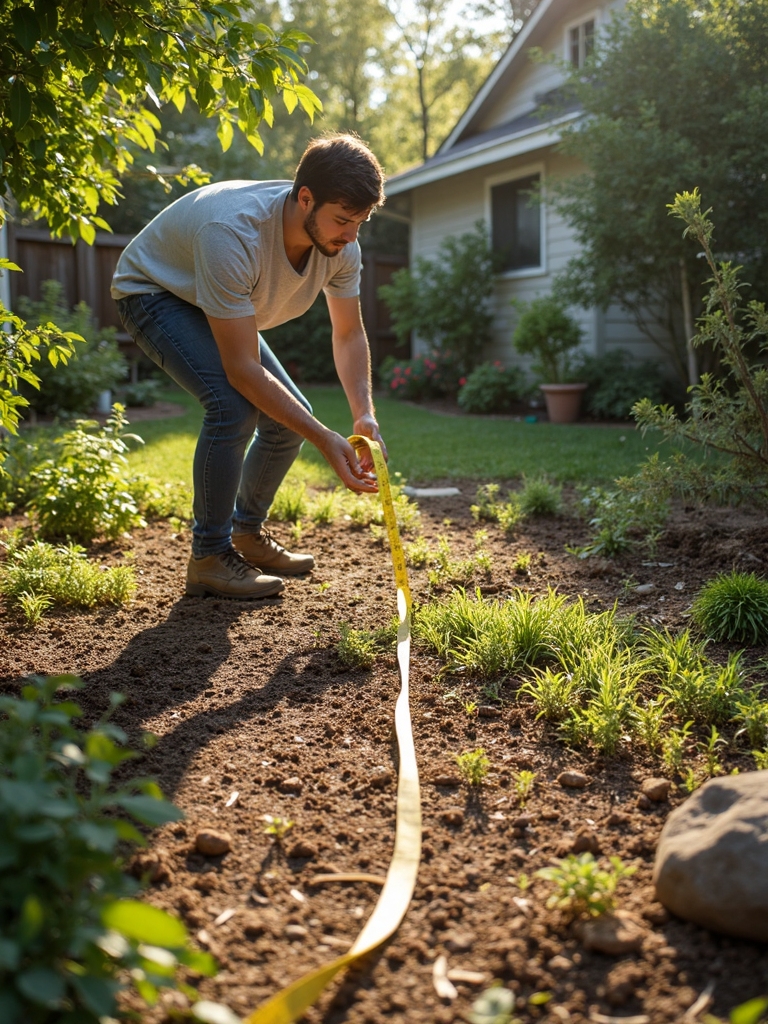
Where exactly should you place your first garden? I always tell new gardeners that finding the right space is the first thing to ponder. You’ll want to scout your yard for a sunny spot that gets at least 6 hours of direct light. Even a small garden can thrive if it’s properly positioned!
Take a weekend to observe how sunlight moves across your garden space.
Choosing the Right Location for Maximum Plant Growth
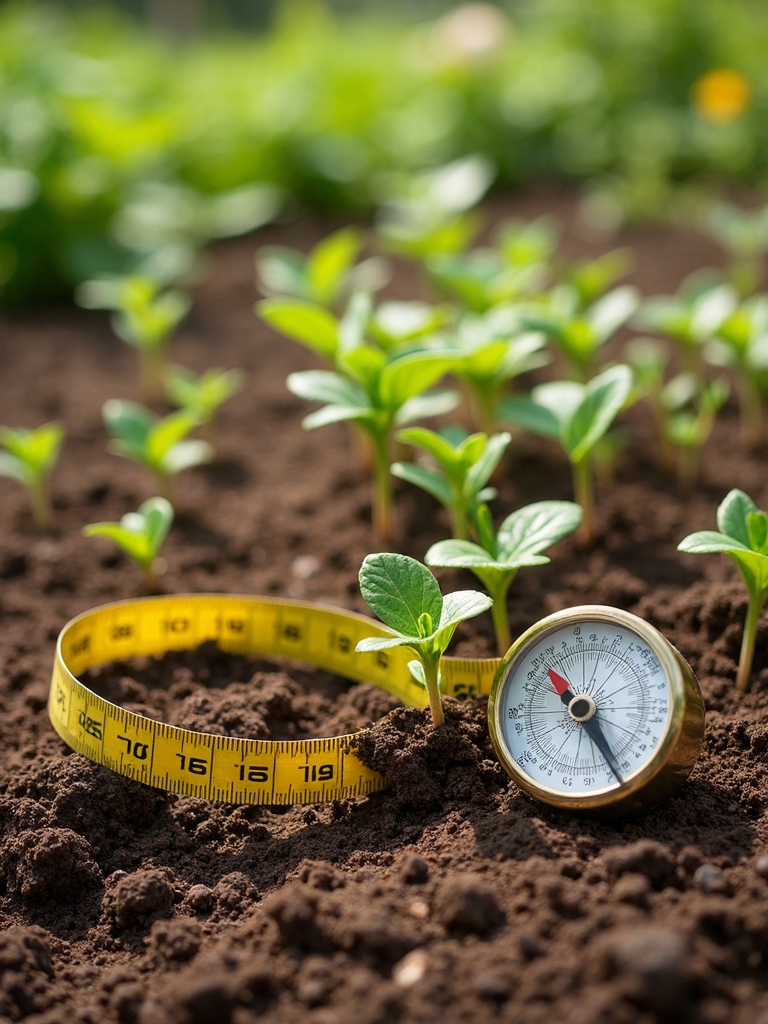
After you’ve assessed your garden’s sunlight patterns, it’s time to finalize the perfect location for your plants to thrive. Your garden layouts should prioritize spots that receive at least 8 hours of direct sunshine—your growing plants will thank you!
You’ll also need easy water access for those thirsty veggies. Don’t worry if your soil’s problematic; raised beds can be your garden’s salvation.
Essential Tools and Materials for Garden Planning
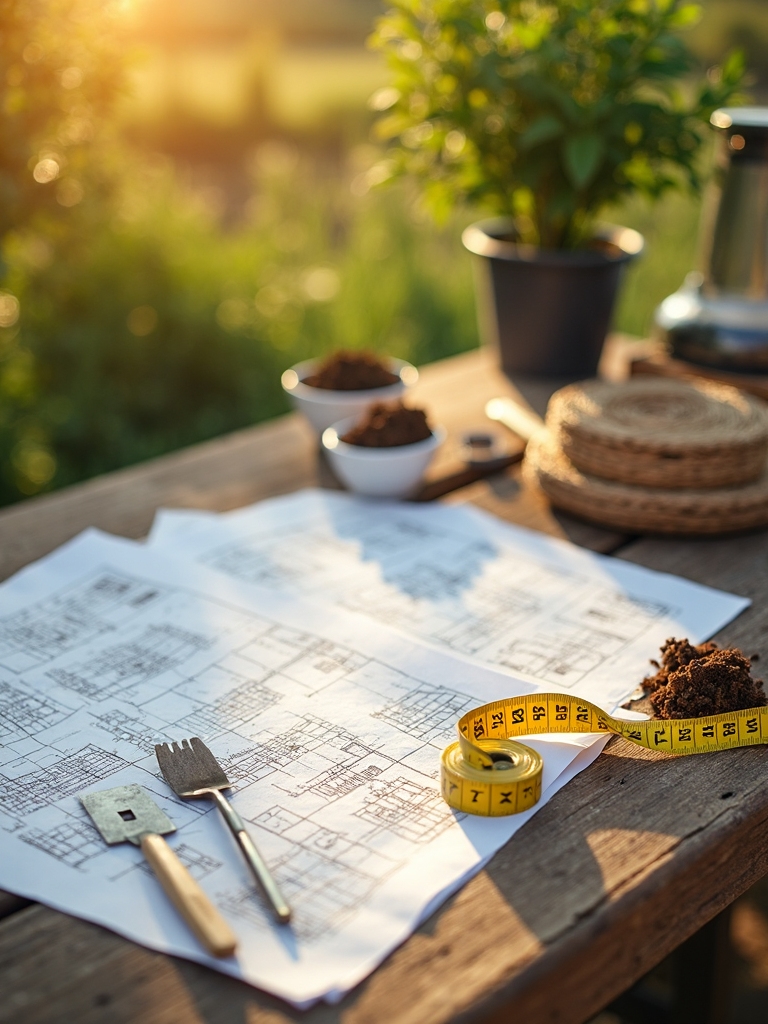
Every successful garden begins with the right planning tools. You’ll need to think about design before growing plants!
I love using simple graph paper and pencils to make my initial garden ideas come to life. Measuring tapes are essential for understanding your space dimensions. Don’t forget soil test kits—they’re like fortune tellers for your dirt!
Online planning apps can simplify the process too.
Creating a Basic Garden Map on Paper
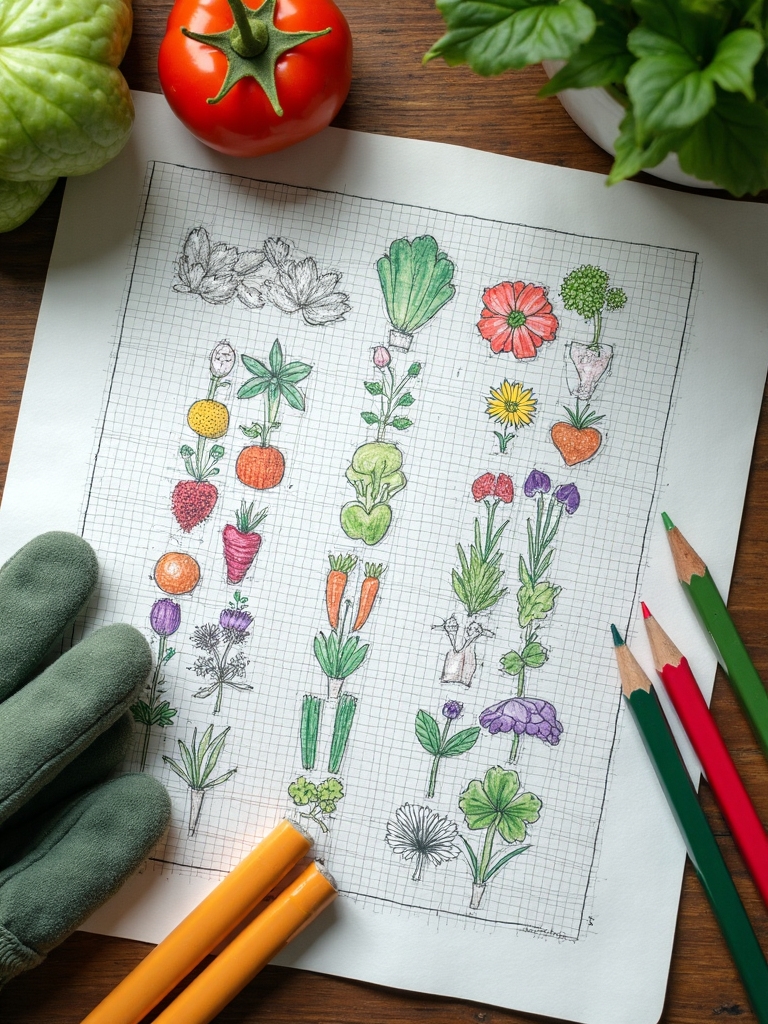
Let’s plunge into creating your first garden map! Grab your paper and draw straight lines to outline your available space to grow. I always mark raised garden beds with rectangles – they’re perfect for beginners!
You’ll need everything you need clearly labeled: sun exposure, water sources, and plant zones.
This beginners guide helps you visualize success before digging that first hole!
Understanding Plant Spacing Requirements
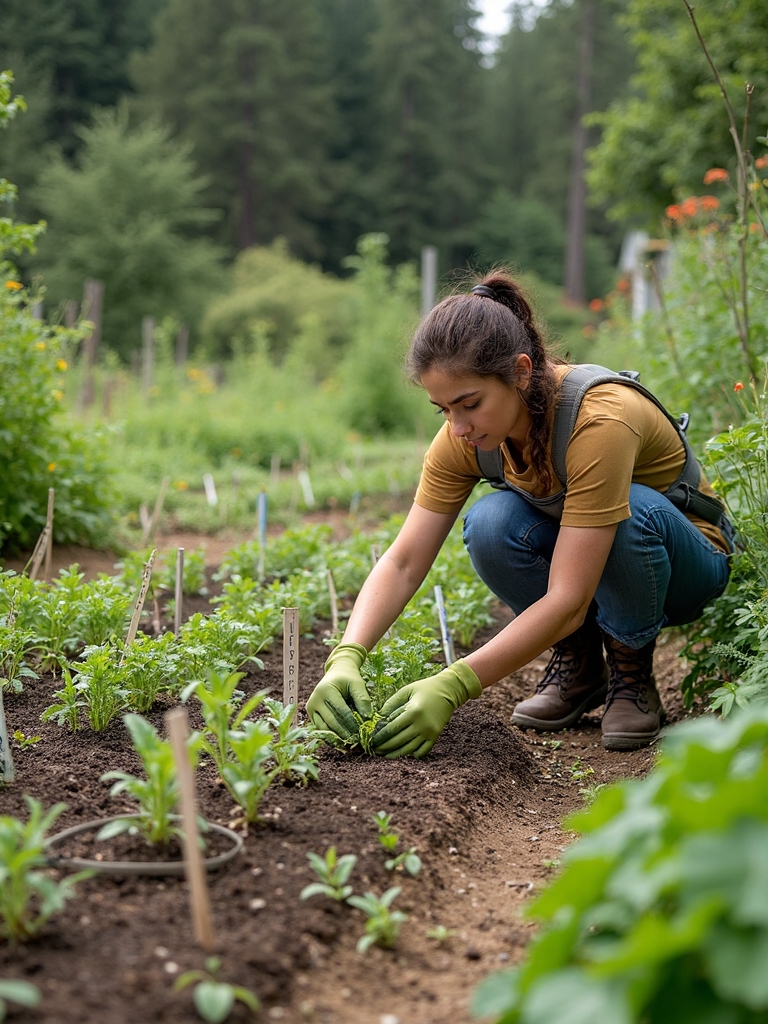
Gardeners often make the classic mistake of cramming too many plants into too little space – I’ve assuredly been guilty of this myself!
When you’re growing your first garden, follow spacing guidelines on seed packets. You’ll give plants room to thrive and prevent overcrowding.
For cut flowers, you can space plants a bit closer together to encourage longer stems. Remember, these spacing suggestions aren’t rigid rules—they’re helpful guidelines to maximize your garden’s productivity and beauty.
Designing Simple Garden Bed Layouts
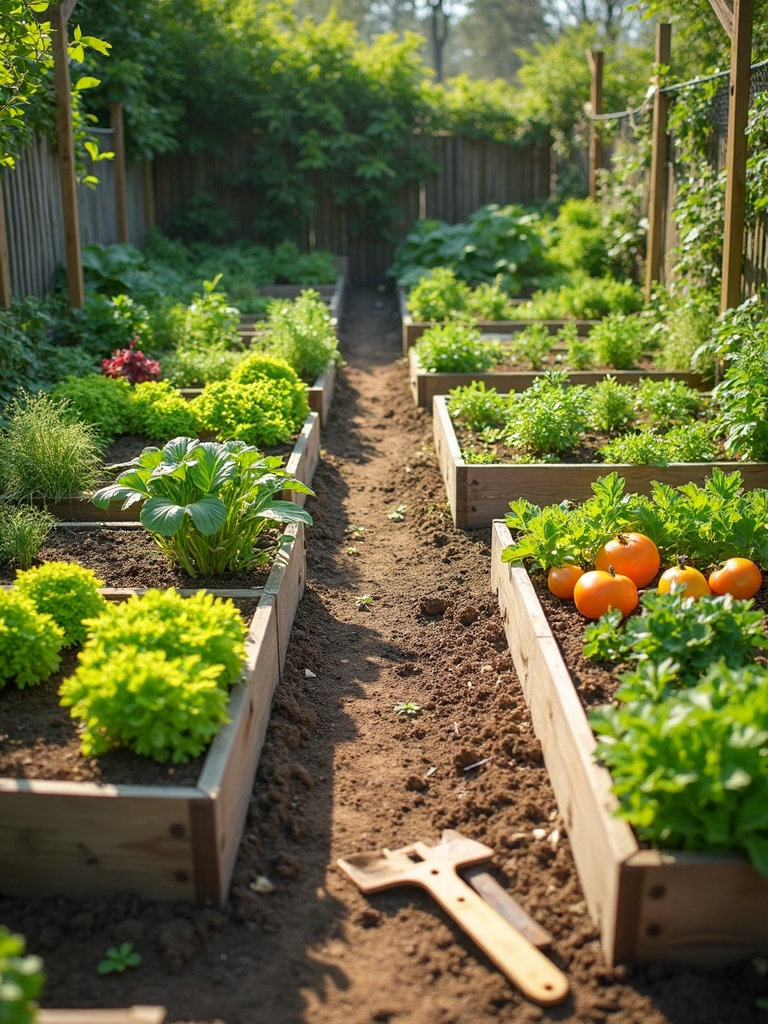
While planning my first garden, I unearthed that starting with a simple layout saved me countless headaches down the road.
You’ll love how easy it’s to build a raised bed in a 4×4 foot square! Trust me, your kitchen garden will thrive when you arrange beds in a grid with 2-3 feet between them.
These simple layouts make growing your vegetable garden so much easier.
Selecting Beginner-Friendly Plants for Success
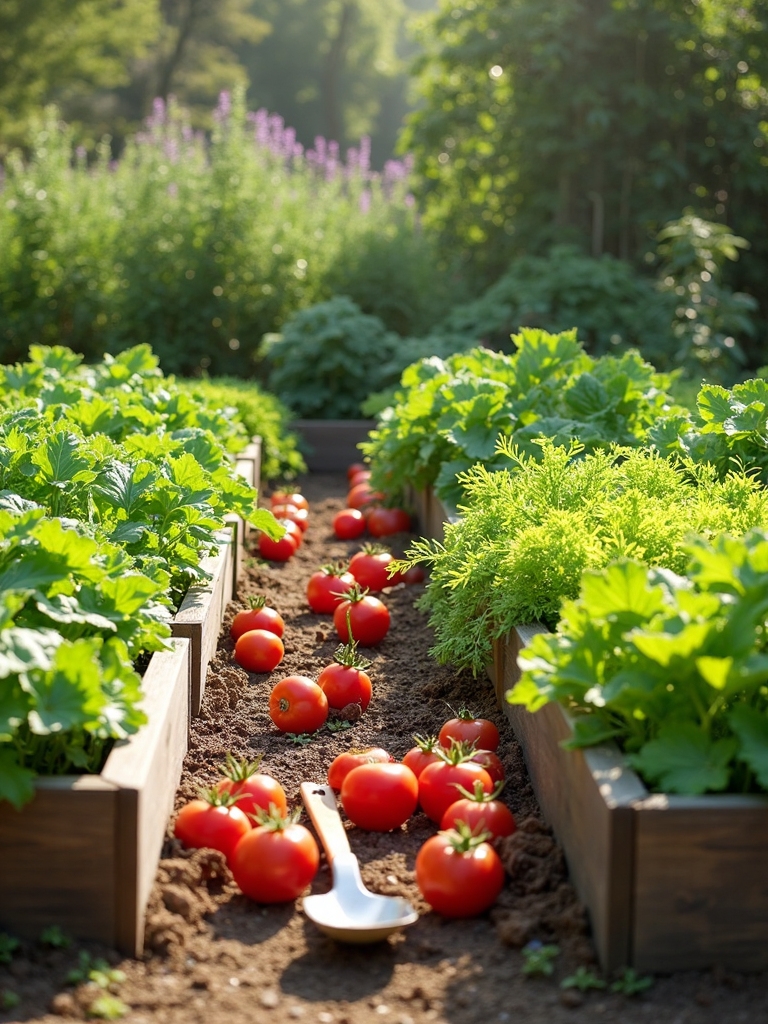
Once I started choosing the right plants, my garden success rate skyrocketed from disappointing to charming! I found annuals like sunflowers and zinnias thrive in raised beds and attract beneficial insects. You can’t garden without confidence, so limit yourself to 5-10 varieties of cut flowers per season.
Perennial plants can wait until you’ve [EXPERT] the basics from those helpful “Easy to Grow” lists.
Planning Efficient Watering and Access Points
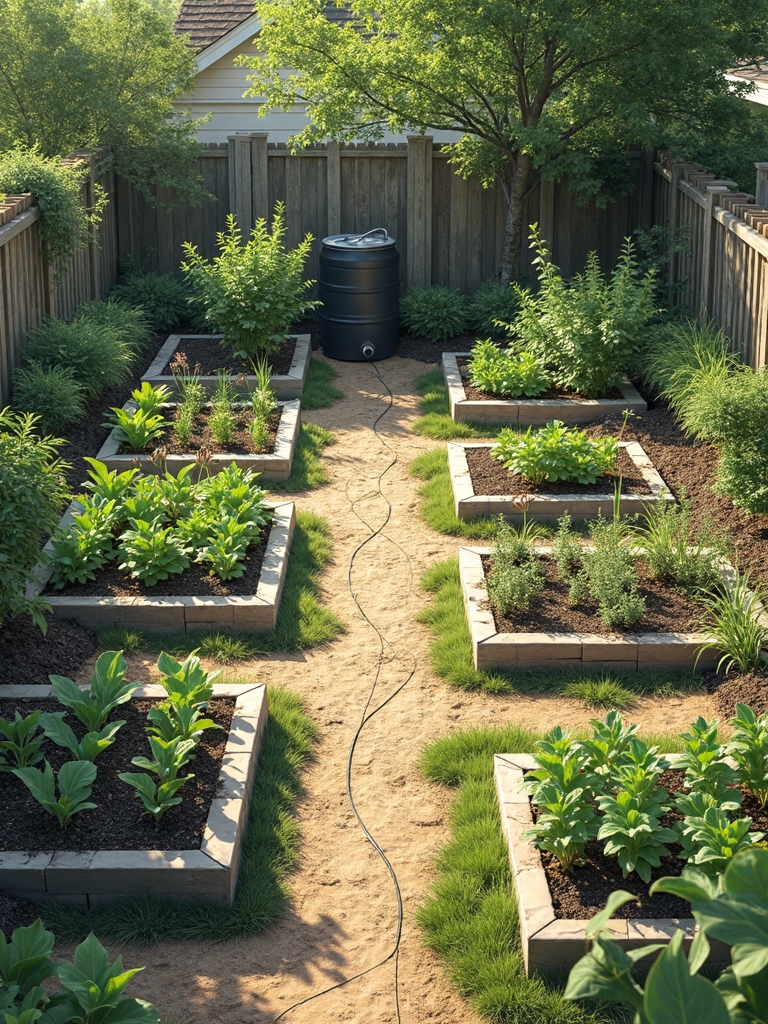
After conquering plant selection, I quickly learned that water access can make or break your gardening experience! Position your garden near a reliable water source—it’ll save countless trips lugging heavy watering cans!
Create paths at least 3 feet wide between beds, and group plants with similar watering needs together. Trust me, your back will thank you! Consider installing soaker hoses and keeping water storage within easy reach.
Creating Practical Garden Pathways
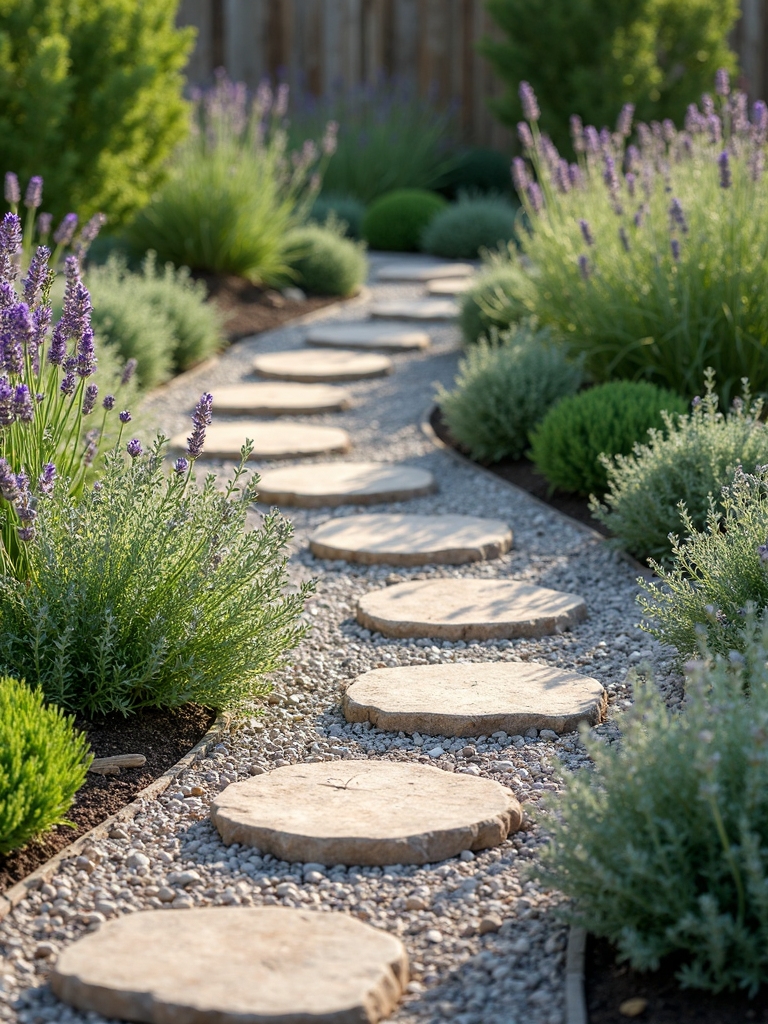
As I learned through plenty of stubborn trial-and-error, garden pathways aren’t just functional—they’re the backbone of your entire garden design!
When planning around raised beds, pathways at least 3 feet wide are a good idea. You’ll want enough room to move comfortably with tools or wheelbarrows.
I’ve found gravel pathways between beds work wonderfully, while brick or stone creates that polished look near house entrances.
Building Raised Beds for Easier Maintenance
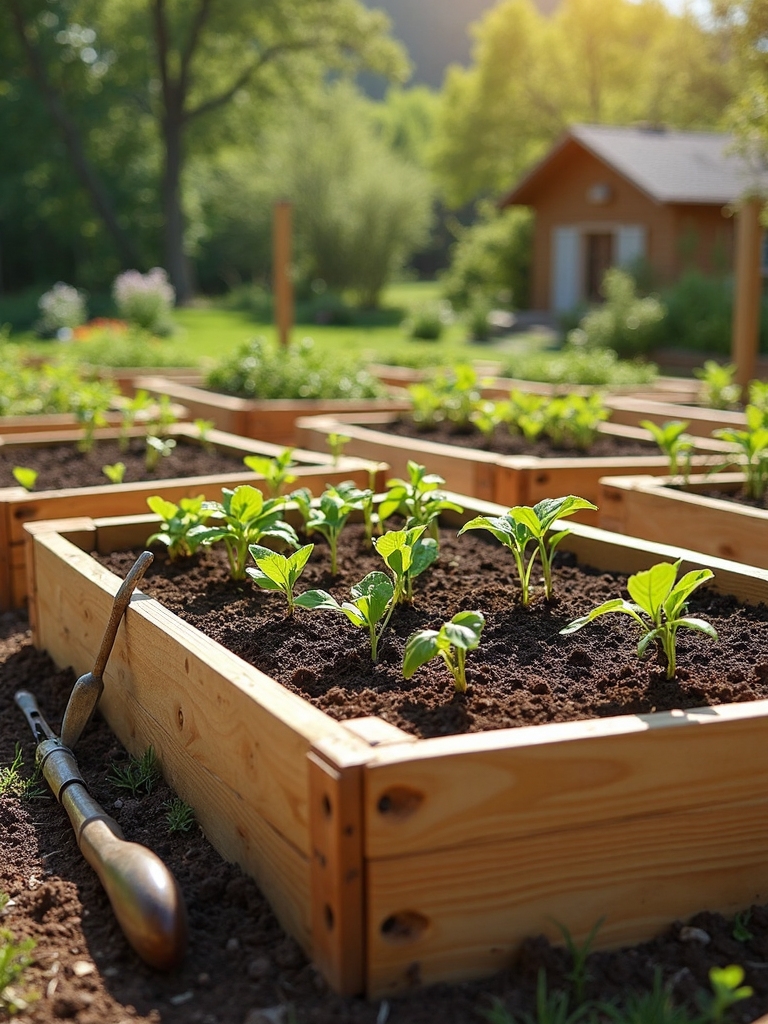
While traditional in-ground gardens require backbreaking bending and kneeling, raised beds have completely changed my gardening experience!
Make sure your garden made of raised beds is between 1.5-4 feet wide—you’ll have much better access from all sides. I’ve tried several different heights, but 2 feet tall ones make excellent options for comfort.
Keep lengths under 12 feet to prevent structural problems!
Incorporating Basic Elements for Visual Interest
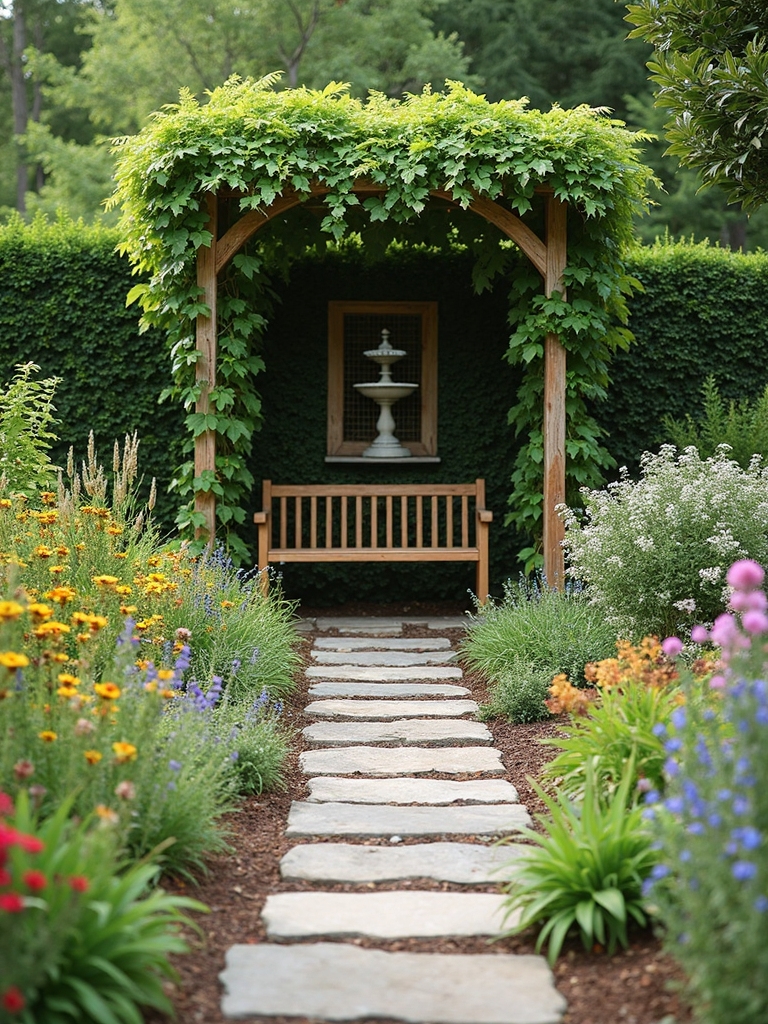
Ever wondered why some gardens pop with personality while others fall flat? It’s all about layering!
In small gardens, create depth by placing low plants in front and tall ones in back. Add focal points like a charming seating area or living wall for eye-catching drama. Don’t forget evergreen shrubs—they’ll keep your garden interesting even in winter months.
Month-by-Month Planning Guide for New Gardeners

Timing is everything in gardening! You’ll want to create your garden by starting in January with layout sketches.
February’s the time to assess your type of soil and add compost.
In March, start seeds indoors, even if your garden is small.
April allows you to grow cool-weather crops, while May’s perfect for tomatoes and climbing plants after frost danger passes.
Frequently Asked Questions
What Is the Most Common Mistake of First Time Gardeners?
You’re likely to make several mistakes as a beginner: overplanting without proper spacing, underwatering during hot days, neglecting weeds that compete for nutrients, ignoring soil quality issues, and lacking patience with slow-growing plants.
What Is the Rule of 3 in Gardening?
The rule of 3 involves repetitive planting patterns with groups of three plants. You’ll create visual balance and flow in your garden when you apply these plant grouping principles, enhancing your layered garden design and symmetrical layout.
What Size Garden Should a Beginner Start With?
Start with a manageable garden area of 10’x10′ or 3’x12′ raised beds. You’ll find these ideal garden dimensions are beginner-friendly gardening spaces. They’re suitable plot sizes that won’t overwhelm you while you’re learning.
How to Create a Beautiful Garden for Beginners?
Start with proper soil preparation, then select plants that match your sunlight requirements. Don’t forget to establish a water management system. You’ll find success when you’re proactive about pest control and choose beginner-friendly varieties.
Conclusion
You’re now equipped to start your first garden with confidence! Remember, planning on paper saves heartache in the soil. I’ve watched countless first-timers convert blank spaces into thriving gardens using these simple steps. Don’t worry about perfection—gardens are forgiving teachers. Start small, learn as you grow, and soon you’ll be sharing homegrown tomatoes with neighbors who’ll swear you’ve been gardening forever!
